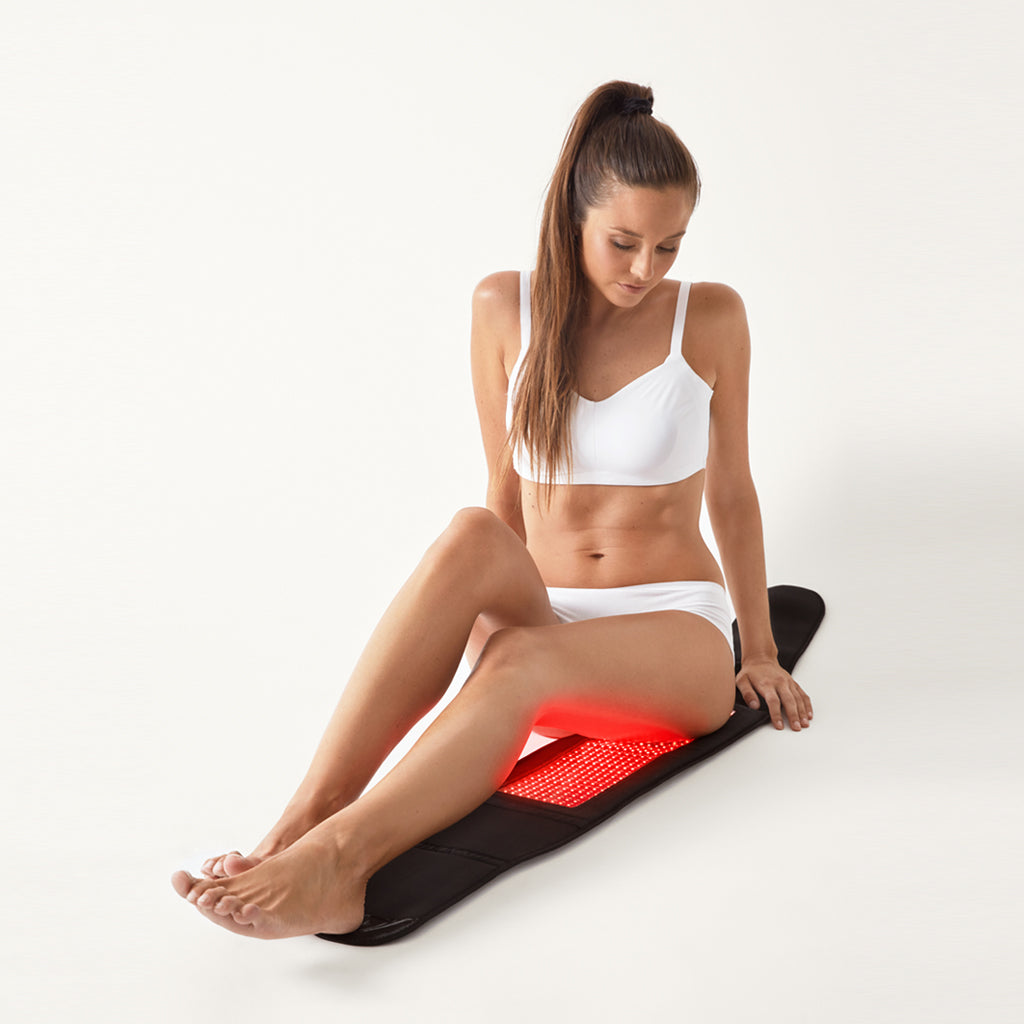Harnessing Luminosity for Leaner Lines: the Role of RLT in Weight Loss and Body Sculpting
The connection between diet and exercise and weight loss is a widely recognized concept. However, is it possible to speed up the process of reaching our desired goals with the help of red light therapy for weight loss? We will delve into the science behind Red Light Therapy, its mechanism of action on the human body, and its role in promoting weight and fat loss.

The effectiveness of red light therapy in treating pain, skin conditions, scars, and accelerating muscle recovery after injuries among various other concerns has been well documented in clinical research. However, clinical studies have also shown that red light therapy can be a helpful tool in aiding weight loss, fat loss, and for general body contouring.
Red light therapy does in fact induce weight loss, and fat loss whilst also increasing muscle mass at a much faster pace than by dieting and exercising alone. This form of body contouring is non-invasive and painless, making it appealing to individuals who want to achieve improvements in their appearance in a natural and healthy way whilst also benefitting from positive effects on general health and wellbeing.
Red light therapy for weight loss can help beyond the results in physical appearance, as it has a mood-boosting ability which together with the accelerated physical results can improve one's mindset, motivation, and perseverance with the weight loss program. Additionally, red light therapy supports the body at a cellular level, treating possible underlying causes of weight gain.
However, it is important to understand that red light therapy should not be considered a replacement for a healthy lifestyle that includes a balanced diet and regular exercise and it should be used as a complementary treatment to support weight loss and health. It is best to consult with a healthcare professional to determine if red light therapy is appropriate for you and your individual needs and goals.
How does red light therapy work For Weight Loss?
Red light therapy, also known as photobiomodulation or low-level light therapy (LLLT), involves the use of light-emitting diode (LED) bulbs to deliver red and near-infrared (NIR) wavelengths within the “therapeutic window” of 650 nanometers (nm) to 850 nm.
The most effective red light therapy devices use LED bulbs specifically calibrated to the red and NIR wavelengths, which have been proven to have numerous therapeutic benefits on the human body.
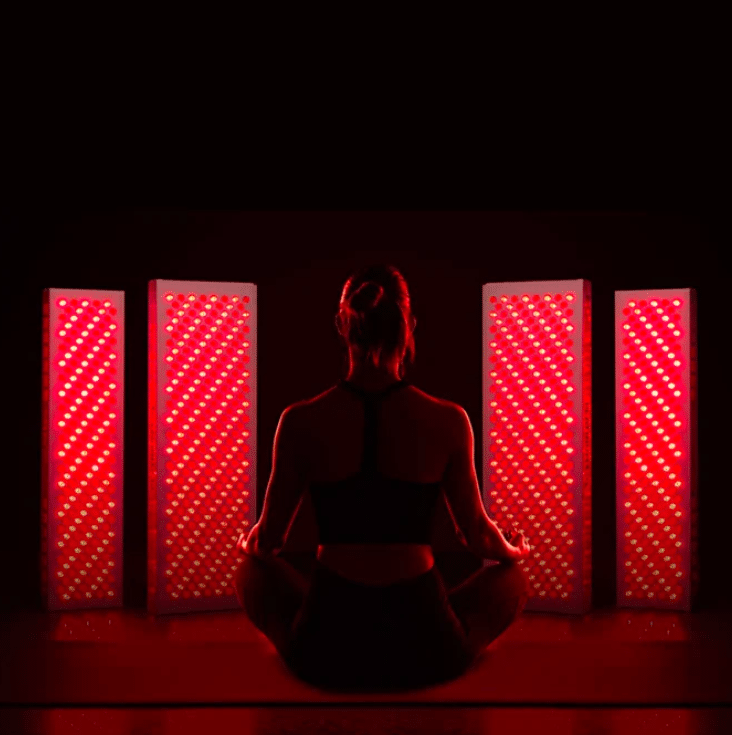
Once the light photons from the LED bulbs interact with the body's cells, they initiate a series of positive biological effects. One of the ways red light therapy is believed to aid weight loss is by increasing the production of adenosine triphosphate (ATP), the energy currency of cells. With more ATP available, cellular metabolism can improve, which can support weight loss.
Additionally, red light therapy is thought to affect adipocytes, the cells responsible for storing fat, causing the lipids within them to disperse. This helps the body to eliminate stored fat more easily, resulting in weight loss.
Red light therapy also promotes circulation by increasing blood flow, allowing the body to transport nutrients to cells and eliminate waste more efficiently. This can help reduce inflammation, a contributing factor in many health conditions including obesity. Additionally, red light therapy can reduce oxidative stress and improve insulin sensitivity, both of which play a role in the development of obesity. By regulating metabolism and reducing oxidative stress, red light therapy can help support weight loss.
Discover our recommended Best Red Light Therapy Devices For Weight Loss and Body Contouring
How does red light therapy aid fat loss and why is it effective as a body contouring tool?
The potential of red light to induce the release of lipids from fat cells is a significant discovery in the field of red light therapy. Scientific studies have demonstrated that red light therapy promotes the reduction of fat cells in the body. For example, in a study conducted by Harvard researchers, it was found that four minutes of exposure to red light therapy at 635 nm resulted in 80% of the lipids being released from the fat cells, and after six minutes, almost all the fat had been expelled.

The exact mechanism behind this effect is believed to involve the creation of temporary pores in fat cells as a result of exposure to red light. This allows the lipids to escape. Additionally, red light has been shown to promote the natural death of fat cells, known as apoptosis, which results in the lipids stored within the cells being released and eventually expelled from the body.
These results offer great hope for those who want to lose localized fat or improve the appearance of specific areas where fat reduction is desired. Historically, targeted fat loss has been achieved mainly by undergoing invasive procedures whereas evidence from recent research has demonstrated that it is possible to achieve a localized fat reduction in a non-invasive way with technologies such as red light therapy that also have the advantage of making a very positive contribution to your general health and wellbeing.
How does red light therapy regulate metabolism?
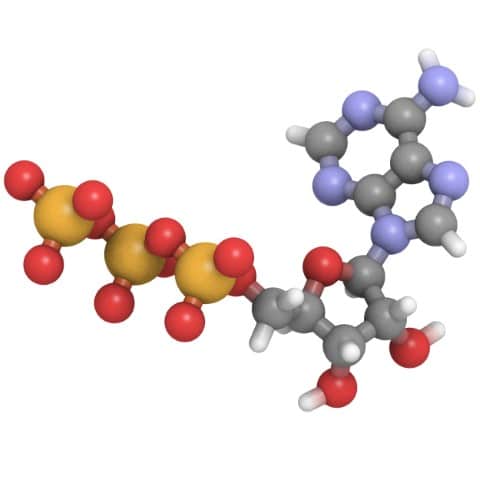
The production of energy in cells can be hindered by various factors such as sleep deprivation, hunger, or jet lag. Red and near-infrared (NIR) light therapy helps to boost the energy levels of cells.
As the red and NIR photons are absorbed by the mitochondria (the energy centres of cells), it triggers the production of adenosine triphosphate (ATP), which is the primary energy source for cells.
The result of this increased cellular energy is healthier cells and improved cell performance, leading to better organ function and higher energy levels. People have reported feeling more energetic and ready to tackle their day-to-day activities.
This added energy could help support weight loss goals by providing the motivation and energy to engage in physical activities such as working out at the gym or taking a brisk walk.
How does red light therapy regulate appetite?
Red light has been found to play a role in controlling hunger through hormones known as leptin and ghrelin. Leptin, produced by fat cells, works to decrease appetite when the body has excess fat. Conversely, ghrelin increases appetite.
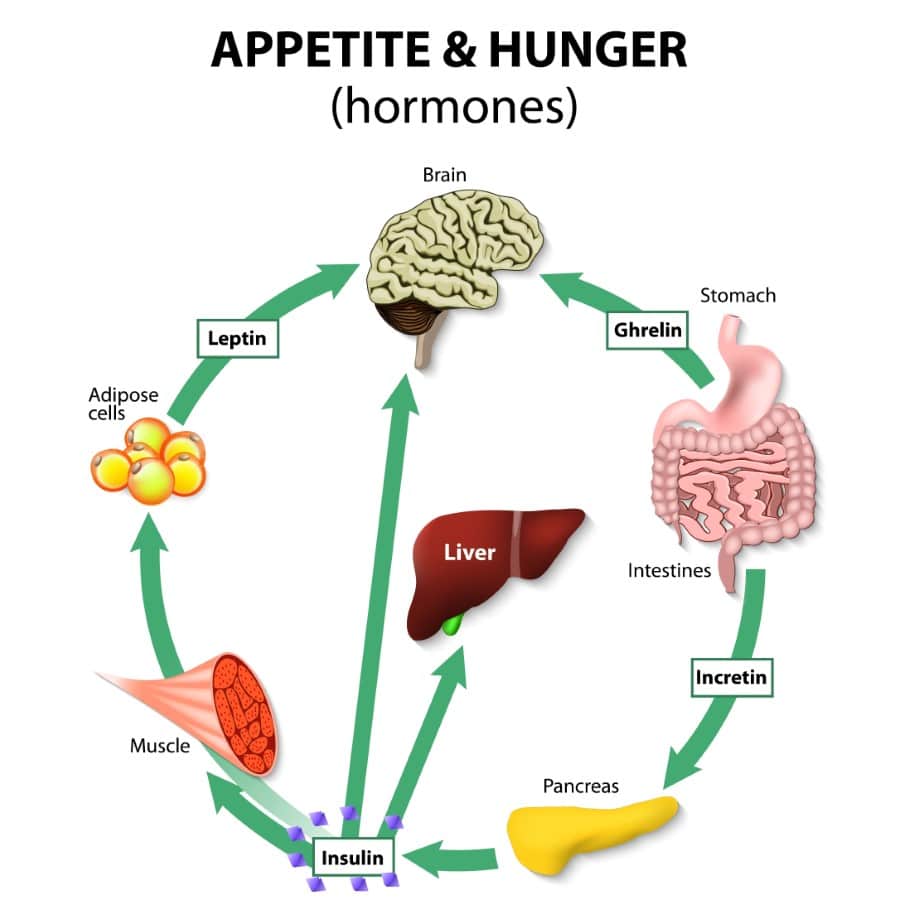
In a 2012 study examining the effects of light on leptin and ghrelin levels, researchers found that changes in day length could lead to fluctuations in body weight as the circadian clock affects these hormones. The study also revealed that sleep deprivation results in lower leptin levels and higher ghrelin levels, leading to increased hunger.
The study showed that red light therapy could effectively reduce ghrelin levels, from 28% to 19%, potentially contributing to a reduction in hunger. These findings demonstrate the potential of red light therapy in regulating appetite and impacting body weight.
How does red light therapy regulate thyroid function and weight?
Red light therapy has been linked to a reduction in autoimmune activity in the thyroid, as seen in a 2012 study conducted by researchers from Brazil. This study showed the potential of red light therapy in restoring normal thyroid function, which plays a crucial role in regulating metabolism. An efficiently functioning thyroid helps regulate the metabolism and increase overall energy levels, making it easier to maintain a regular fitness routine.
Hypothyroidism, or a low-functioning thyroid, has been associated with excessive weight gain. By reducing autoimmune activity in the thyroid, red light therapy can help restore its normal function, leading to better regulation of metabolism and improved energy levels that can have a positive effect on weight loss.
Does red light therapy reduce insulin resistance and body fat?
A study by Brazilian researchers in 2015 found that the combination of near-infrared light therapy and exercise can have a significant impact on reducing insulin resistance, body fat, and improving the physical benefits of weight loss in obese women.
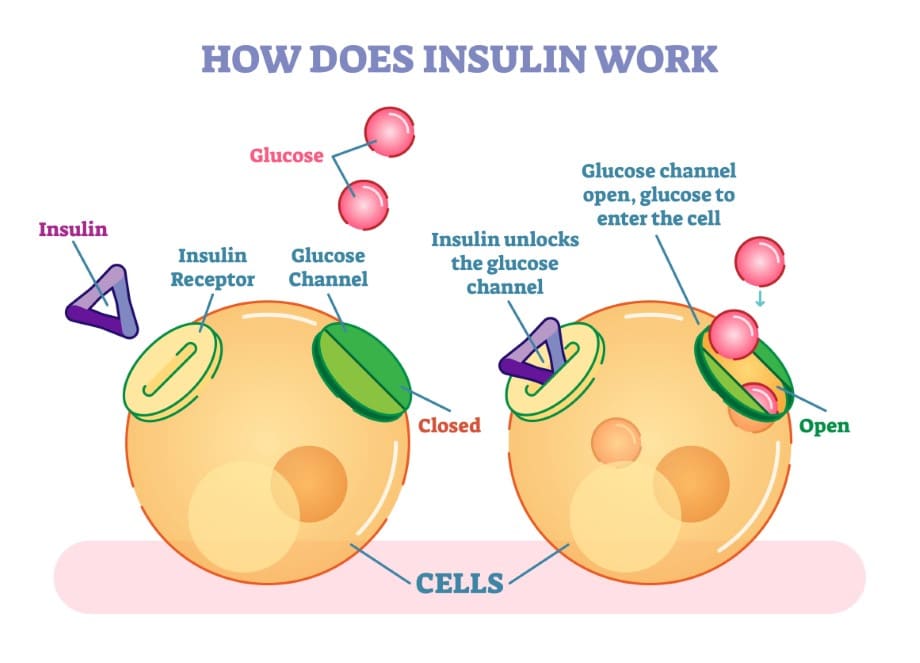
The study involved 64 obese women who participated in a 20-week program consisting of regular exercise, including three weekly sessions of aerobic and weight training, and near-infrared light therapy. The researchers monitored insulin levels and fat loss and discovered that the combination of exercise and near-infrared light therapy not only decreased insulin resistance but also resulted in a decrease in fat mass.
The findings showed that the combination of physical training and near-infrared light therapy was more effective in boosting metabolism compared to physical training alone. The study highlights the potential benefits of incorporating near-infrared light therapy into a weight loss program to enhance its effectiveness and improve overall health outcomes.
Can red light therapy help you burn more calories, shape your body and lose weight faster?
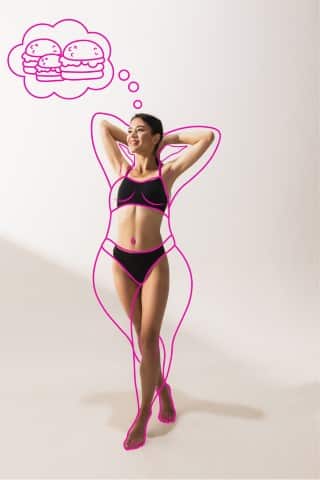
The idea of focusing on building muscle in the legs to reduce belly fat may seem unconventional. However, it is crucial to understand that muscles are calorie-burning machines, and every pound of muscle in our body can burn up to 50 calories even while at rest.
Hence, building mass in large muscle groups is crucial in any effective weight loss program and a way to enhance your metabolism and promote increased fat burning around the clock.
It is essential to note that everyone's body is different and that there is no need to aim for excessive muscle growth. Instead, the focus should be on toning and firming up your body. A healthy balanced exercise regime coupled with red light therapy will lead to a stronger metabolism making it easier to achieve and maintain a healthy weight and toned body.
A study conducted in 2016, co-authored by renowned red light therapy researcher Michael Hamblin, found that athletes who received red light therapy before and after exercising experienced quicker muscle recovery and a greater increase in muscle mass. The study also revealed that NIR light therapy and a combination of red and NIR light therapy can not only increase muscle mass but also reduce muscle inflammation and oxidative stress.
Can red light therapy (LLLT) improve the appearance of cellulite?
Cellulite is a condition that affects people of both genders but is more prevalent among women. Approximately 80 to 90 per cent of women are believed to experience cellulite at some point in their lives. Cellulite is believed to stem from a combination of the connective tissue below the skin and the layer of fat below it.
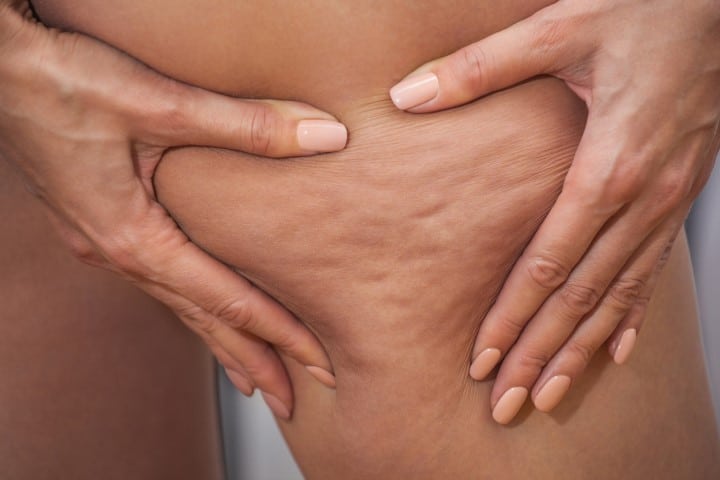
Women have a vertically arranged layer of fat cells and connective tissue, which makes it easier for the fat cells to push through the connective tissue and create the dimpled appearance of cellulite, while in men the tissue is structured in a cross-hatch pattern, which may account for their reduced likelihood of developing cellulite.
Hormones, including estrogen, insulin, noradrenaline, thyroid hormones, and prolactin are believed to play a significant role in cellulite formation. In particular, as estrogen levels decline in women approaching menopause, blood flow to the connective tissue under the skin also decreases, leading to decreased oxygen levels and reduced collagen production.
As a result, the dermal layer and connective tissue weaken, and combined with an increase in fat cell size, fat deposits become more noticeable creating the well-known dimpling effect.
As people age, skin loses its elasticity, and becomes thinner, and cellulite is more likely to occur. While a healthy lifestyle that includes regular exercise, a whole foods diet, and fat loss can be helpful, they are not always sufficient. Red light therapy, however, has demonstrated the potential for reducing the appearance of cellulite.
A recent study evaluated the impact of combining near-infrared light with treadmill training. The study divided 20 female participants into two groups, one that was treated with NIR light and high-intensity treadmill training, and another that only used the treadmill. The group that received both treatments showed reduced cellulite in the buttocks and hip areas, while the treadmill-only group did not.
Final Thoughts and Safety
Red Light Therapy(RLT) can definitely offer a helping hand to your weight loss and body sculpting efforts whilst assisting with firming the skin and minimising the appearance of any stretch marks and cellulite. This therapy can be administered in a clinical setting, such as a doctor's office or spa, but also at home.
Various RLT devices are now available for home use including professional-size Red Light Therapy panels and beds. We suggest that you read our short Guidance on How to Select the Best Red Light Therapy Device for your specific condition and needs to ensure safety and efficacy.
Red light therapy is generally deemed safe for most people. However, it's not recommended for those with photosensitive skin conditions, individuals on medications that increase photosensitivity, pregnant or breastfeeding women, and those with a history of skin cancer. Always consult with a healthcare expert before embarking on any new treatment, and adhere to the device manufacturer's guidelines to ensure both safety and optimal results.
Frequently Asked Questions
What areas of the body can be targeted with red light therapy for weight loss?
Red light therapy can be used on various areas of the body, including the abdomen, hips, thighs, and arms.
How do I use red light therapy at home?
Red light therapy can be administered at home using a handheld device, belt, light therapy panel or bed. Simply position the device close to the area you want to treat and turn it on for the recommended amount of time following the manufacturer's instructions.
How long should I use red light therapy?
The duration of a red light therapy session depends on the specific device being used and the condition being treated. In general, sessions can range from a few minutes to 30 minutes or more.
How often should I use red light therapy for weight loss?
Red light therapy for weight loss is often used several times per week for several weeks, and some people see results after just a few sessions.
Can I use red light therapy on any part of my body?
Yes, Red light therapy can be used on any part of the body that needs treatment. Remember to protect your eyes and avoid looking straight into red light during the treatment.
What should I wear during a red light therapy session?
You should wear clothing that allows the light to reach the area you want to treat. The skin should be exposed to red light.
Are there any risks associated with red light therapy?
Red light therapy is generally considered safe and has few side effects. However, it is important to follow the manufacturer's instructions and avoid looking directly at the light to reduce the risk of eye damage.
Do I need to apply any special products before using red light therapy?
No, you do not need to apply any special products before using red light therapy. However, some people prefer to use a moisturizer or serum to enhance the effects of the therapy.
Can red light therapy be used during pregnancy?
There is limited research on the safety of red light therapy during pregnancy, so it is recommended to consult with a healthcare provider before using the therapy while pregnant.
What is the difference between red light therapy and infrared therapy?
Red light therapy uses a specific wavelength of red or near-infrared light, while infrared therapy uses a broader range of infrared light. The two therapies have different applications and mechanisms of action.
Red light therapy is a type of therapy that uses red or near-infrared light to treat a variety of conditions. During a red light therapy session, a person is exposed to a specific wavelength of red or near-infrared light that is delivered through a light-emitting device. The light penetrates the skin and reaches the cells within the body with a range of therapeutic effects.
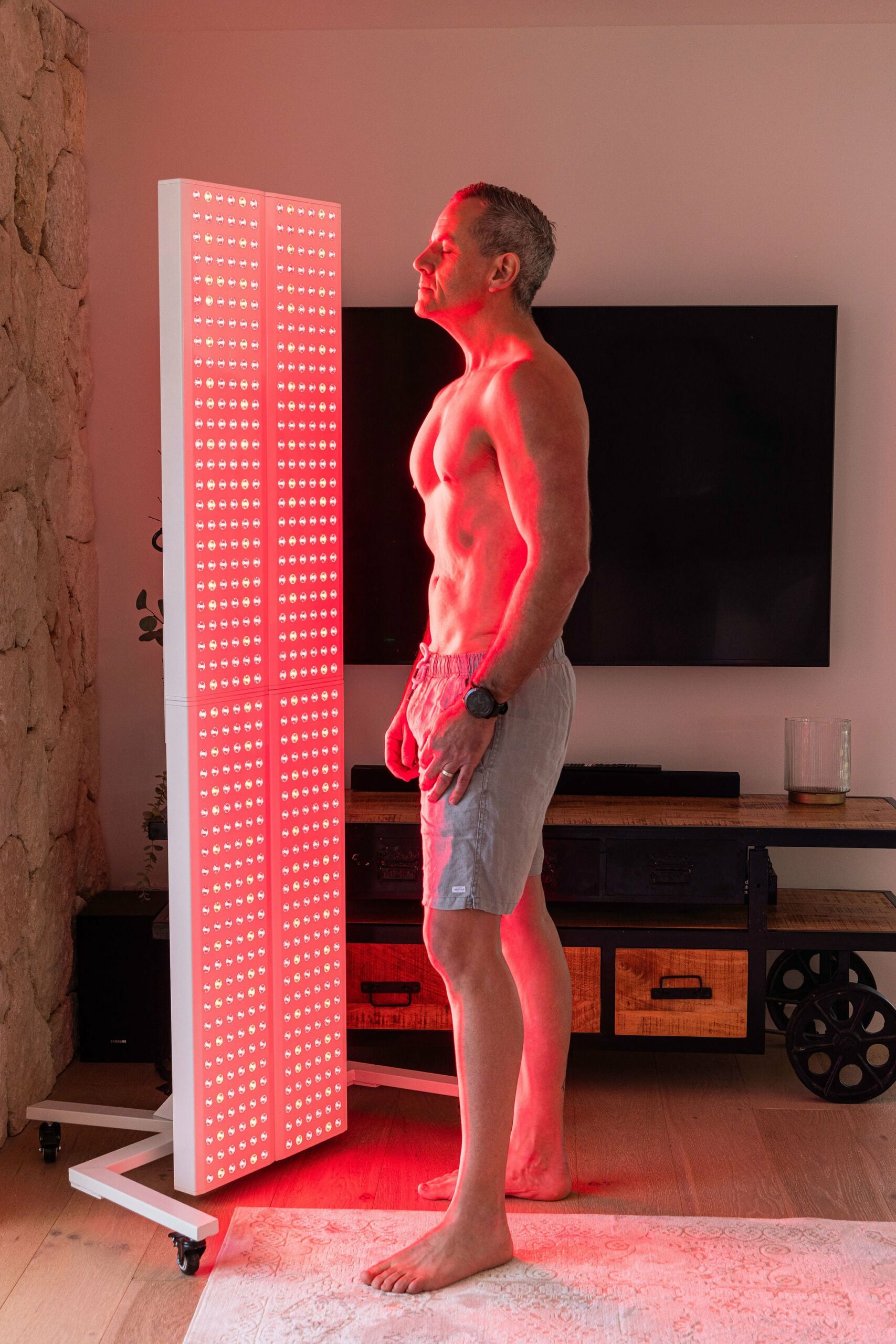
Red light is a type of visible light, Its wavelength falls between approximately 630 and 700 nanometers (nm) on the electromagnetic spectrum. Red light is often used in light therapy treatments for the skin, as it has been shown to have the most beneficial effects on skin cells and collagen production.
Near-infrared (NIR) light, on the other hand, has a longer wavelength than visible red light and falls between approximately 700 and 1200 nm on the electromagnetic spectrum. NIR light is not visible to the human eye, but it can penetrate deeper into the skin and other tissues than visible light, making it useful for a variety of therapeutic applications ranging from wound healing to inflammation reduction or improved circulation, among other benefits.
Different Red Light Therapy devices usually deliver slightly different wavelength ranges that research has shown to be the most effective for the concern they are being recommended for.
Red Light Therapy (RLT) strengthens the mitochondria, the cell’s powerhouse, where cell energy is created. Adenosine Triphosphate (ATP) is the critical energy-carrying molecule that is found in all living organisms. By optimizing the function of the mitochondria, more ATP is produced and with increased energy cells can function optimally.
This scientific breakthrough resulted in scientists discovering Red Light Therapy’s ability to stimulate and speed up tissue repair and growth. Red Light Therapy is now widely used for maintaining a healthy complexion, speeding up muscle recovery, reducing inflammation, improving sleep, treating neurological conditions, balancing hormones, treating pain, and even losing weight.
Research has also indicated that Red Light Therapy can help to restore cellular balance and alleviate the negative impact of blue light exposure. The prevalence of blue light in our society has become a growing concern as many individuals spend prolonged periods of time looking at screens on a daily basis.
Red Light Therapy (RLT) is also called:

Low-Level Light Therapy (LLLT), Photobiomodulation (PBM), Cold Laser Therapy, Photonic Stimulation, Low-Power Laser Therapy (LPLT), Phototherapy
A Brief History of Red Light Therapy
The journey of Red Light Therapy (RLT) has been both fascinating and impactful, starting from its humble origins in the late 19th century. Dr. Niels Ryberg Finsen, the pioneer in light therapy, made a groundbreaking discovery in 1896 that light could be harnessed to treat Lupus Vulgaris, a form of tuberculosis affecting the skin. His work, which led to the tangible healing of skin lesions, was so revolutionary that he received the Nobel Prize in Physiology in 1903.
Fast forward to 1960, Theodore H. Maiman invented the first operational laser, fulfilling Albert Einstein's theories on the principles of lasers laid out in 1917. This invention opened new avenues for RLT, allowing more precise applications.

NASA took an interest in Red Light Therapy in 1987, conducting experiments to examine its effects on plant growth in space missions. These studies hinted at RLT's potential to benefit not just human health but also broader ecological systems.
In the same vein, Endre Mester's work in 1967 set the stage for modern RLT applications.
His experimentation with low-level laser therapy on skin cancer effects demonstrated the technique's efficacy and led to FDA approval for wound healing in 2002.
The advent of LED technology in the 1990s was a game-changer, offering an efficient and cost-effective alternative to traditional light bulbs. This technological leap made light therapy more accessible to the general public, including its use in sports medicine where physical therapists reported quicker recovery times for sports-related injuries.
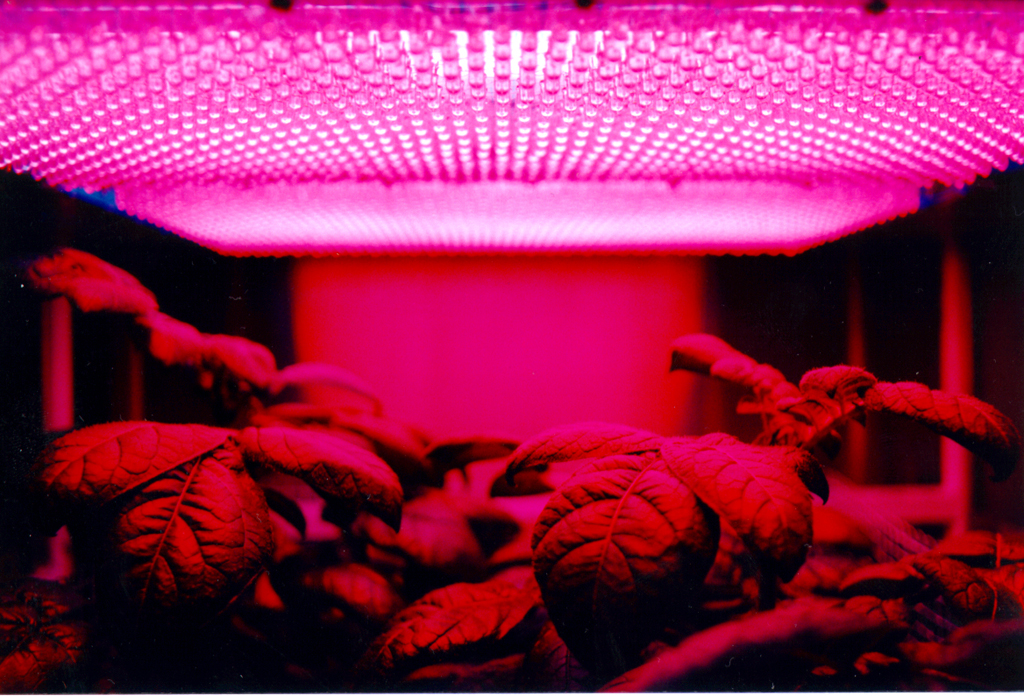
One of the most recent and exciting developments in RLT is its potential role in weight management. Studies indicate that Red Light Therapy can influence hormones like Leptin and Ghrelin, which play key roles in regulating appetite and metabolism. This makes RLT a promising avenue for non-invasive weight loss treatments.
As RLT continues to evolve, its applications keep expanding, crossing multiple disciplines from medicine to ecology. Researchers are continuously probing its potential, finding new ways to apply this age-old yet ever-advancing technology.
Our articles exclusively rely on primary sources of information, encompassing peer-reviewed medical journals and esteemed academic institutions.
- Low-Level Laser Therapy for Fat Layer Reduction: A Comprehensive Review
- Photobiomodulation at Different Wavelengths Boosts Mitochondrial Redox Metabolism and Hemoglobin Oxygenation
- Efficacy of low-level laser therapy for body contouring and spot fat reduction
- Low-level laser therapy for weight reduction: a randomized pilot study
- Non-invasive subcutaneous fat reduction: a review
- A double-blind, placebo-controlled randomized trial evaluating the ability of low-level laser therapy to improve the appearance of cellulite
- Effect of low-level laser therapy on abdominal adipocytes before lipoplasty procedures
- Effect of 635nm Low-level Laser Therapy on Upper Arm Circumference Reduction: A Double-blind, Randomized, Sham-controlled
- Application of low-level laser therapy for noninvasive body contouring
- Independent evaluation of low-level laser therapy at 635 nm for non-invasive body contouring of the waist, hips, and thighs
- Low-level laser therapy as a non-invasive approach for body contouring: a randomized, controlled study
- A Six-week Low-level Laser Therapy Protocol is Effective for Reducing Waist, Hip, Thigh, and Upper Abdomen Circumference
- The Effect of Combination of Red, Infrared and Blue Wavelengths of Low-Level Laser on Reduction of Abdominal Girth: A Before-After Case Series
- Light modulates leptin and ghrelin in sleep-restricted adults
- Effect of exercise training with laser phototherapy on homeostasis balance resistant to hypercoagulability in seniors with obesity: a randomized trial
- Low-Level Laser Therapy for Reducing the Hip, Waist, and Upper Abdomen Circumference of Individuals with Obesity
- The potential of phototherapy to reduce body fat, insulin resistance and “metabolic inflexibility” related to obesity in women undergoing weight loss treatment
- Low-level laser therapy (LLLT) does not reduce subcutaneous adipose tissue by local adipocyte injury but rather by modulation of systemic lipid metabolism
- Can the use of photobiomodulation for localized fat reduction induce changes in lipid profile? A critical integrative review
- The effects of exercise training associated with low-level laser therapy on biomarkers of adipose tissue transdifferentiation in obese women
- Does treadmill walking with near-infrared light applied to the abdominal area reduce local adiposity and body weight?
- A randomized, open-label pilot of the combination of low-level laser therapy and lorcaserin for weight loss
- Low-level laser therapy (LLLT) associated with aerobic plus resistance training to improve inflammatory biomarkers in obese adults
- Fat liquefaction: effect of low-level laser energy on adipose tissue
- Can low-level laser therapy (LLLT) associated with an aerobic plus resistance training change the cardiometabolic risk in obese women? A placebo-controlled clinical trial

